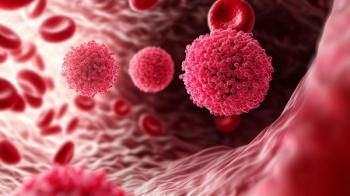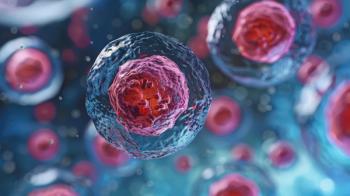
Study: Aerosolized Hydrogen Peroxide Lowers C. Diff Rates in Hospital Settings
Aerosolized hydrogen peroxide system added to current hospital infection prevention protocols found to significantly reduce cases of Clostridioides difficile infection.
The addition of an aerosolized hydrogen peroxide (aHP) system to current hospital infection prevention protocols can significantly decrease cases of Clostridioides difficile infection (CDI), according to a study published in the American Journal of Infection Control, the journal of the Association for Professionals in Infection Control and Epidemiology (APIC).
According to the authors, the study is the first to analyze the long-term use of an aHP disinfection system in lowering instances of CDI in a clinical setting. CDI is among the most common health care-associated infections (HAIs) among patients in large acute-care facilities.
The investigators said that aHP disinfection systems offer a touchless, whole-room approach to enhance standard environmental cleaning protocols by producing an aerosolized dry-mist fog with a specified percentage of hydrogen peroxide. The mist covers exposed surfaces and eliminates C. diff spores that remain after cleaning, according to the study authors.
“Our study showed that persistence in utilizing an aerosolized hydrogen peroxide system had a significant impact on reducing C. difficile infections hospital-wide,” said lead author Christopher L. Truitt, PhD, Wayland Baptist University, in a press release.
Patients with CDI can be asymptomatic or have symptoms that can include mild diarrhea and severe inflammation of the colon that can be life-threatening. The CDC and The Joint Commission have found that CDI accounts for 223,000 cases of HAIs, which have caused more than 12,000 deaths and $6.3 billion annual costs in the United States.1,2
C. diff spores—which can be transmitted via surfaces in hospital rooms, such as bed handrails, equipment controls, and doorknobs—are able to resist hand sanitizers and most disinfectants, according to the study authors. Improving protocols for hand hygiene and environmental cleaning, as well as antibiotic prescribing, can reduce the spread of CDI; however, the spores are still tough to eliminate from hospital surfaces even with consistent implementation of these protocols, according to the study.
To analyze the efficacy of an aHP disinfection system in decreasing instances of CDI, the investigators evaluated CDI rates at a large, acute-care facility in Philadelphia, Pennsylvania, over a 10-year period. They compared incidence of health care-associated CDI (HA-CDI) before and after the aHP system was implemented as an addition to their standard disinfection procedures after the discharge or transfer of patients with CDI.
The study indicated that consistent use of the aHP system produced a significant and sustained decrease in rates of HA-CDI. In the 27 months before use of the aHP system, the facility recorded 120 instances of HA-CDI. After the aHP system was implemented, there were 72 cases found over a 33-month interval, which represents a 41% reduction in the facility’s HA-CDI rate from 4.6 per 10,000 patient days to 2.7 per 10,000 patient days (p<0.001).
In a long-term analysis of an additional 5-year period, consistent use of the aHP system with an environmental cleaning program and other measures, including antibiotic stewardship, showed a 74% decrease in hospital-onset CDI. The researchers noted that this total reflects a January 2015 change in CDI classification and reporting from “healthcare-acquired” to “hospital-onset” per the National Healthcare Safety Network.
Further, between January 2015 and December 2019, CDI rates were found to drop from 5.4 per 10,000 patient days to 1.4 per 10,000 patient days.
“CDI is difficult to prevent because it is so hard to eliminate from the environment. The study conducted by Dr. Truitt and colleagues provides valuable insight about the benefits of supplementing prevention efforts with aHP to help meaningfully decrease rates of this often-deadly disease,” said 2022 APIC president Linda Dickey, RN, MPH, CIC, FAPIC, in a press release.
References
- Centers for Disease Control and Prevention. Clostridioides difficile Infection. https://www.cdc.gov/HAI/organisms/cdiff/Cdiff_infect.html. Published 2019. Accessed November 19, 2020.
- The Joint Commission Center for Transforming Healthcare. (2016). Reducing Clostridium Difficile Infections Project. Oakbrook Terrace: The Joint Commission.
Newsletter
Stay informed on drug updates, treatment guidelines, and pharmacy practice trends—subscribe to Pharmacy Times for weekly clinical insights.



















































































































































































































